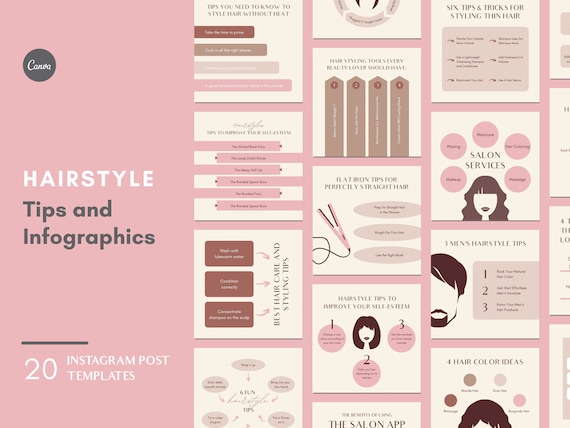Unlock the secrets of search engine dominance! Discover 10 foolproof steps to boost your beauty salon’s website to the top.

Image courtesy of Element5 Digital via Pexels
Table of Contents
- Understanding the Importance of SEO for Beauty Salons
- Step 1: Perform Comprehensive Keyword Research
- Step 2: Optimize Your Website’s Title Tags and Meta Descriptions
- Step 3: Utilize Keywords Throughout Your Website’s Content
- Step 4: Improve Your Website’s Loading Speed
- Step 5: Make Your Website Mobile-Friendly
- Step 6: Focus on Local SEO Strategies
- Step 7: Generate High-Quality Backlinks
- Step 8: Leverage the Power of Social Media
- Step 9: Encourage Online Reviews and Testimonials
- Step 10: Monitor and Analyze Your SEO Efforts
- Conclusion
When it comes to running a beauty salon, having a strong online presence is essential. With more and more people relying on the internet to find local businesses, optimizing your salon’s website for better search engine rankings can make a huge difference in attracting new customers and staying ahead of your competition. In this blog post, we’ll share ten easy steps to help you boost your beauty salon’s online visibility and climb the search engine rankings.
Understanding the Importance of SEO for Beauty Salons
Before diving into the optimization techniques, it’s crucial to understand the concept of Search Engine Optimization (SEO) and its significance for beauty salons. SEO is all about improving your website’s visibility on search engine result pages (SERPs), which in turn drives organic traffic to your site. By implementing effective SEO strategies, you increase the chances of potential customers finding your salon when they search for beauty services online.
Step 1: Perform Comprehensive Keyword Research
Keyword research is the foundation of any successful SEO strategy. Begin by brainstorming a list of relevant keywords that potential customers might use when searching for beauty salons or specific services you offer. You can then use keyword research tools like Google Keyword Planner or SEMrush to identify high-volume and low-competition keywords to target on your website.
Step 2: Optimize Your Website’s Title Tags and Meta Descriptions
Title tags and meta descriptions are essential HTML elements that search engines use to understand the content of your web page. Make sure each page on your salon’s website has a unique and descriptive title tag that includes relevant keywords. Similarly, create compelling meta descriptions that accurately summarize the page’s content and entice users to click through to your site.

Image courtesy of stephcorrigan.com via Google Images
Step 3: Utilize Keywords Throughout Your Website’s Content
Placing relevant keywords naturally throughout your website’s content helps search engines understand the context and relevance of your pages. Incorporate keywords into your page headings, body text, image alt tags, and URLs. However, don’t overdo it; make sure your content sounds natural and engaging to human readers.
Step 4: Improve Your Website’s Loading Speed
A fast-loading website not only provides a better user experience but also impacts your search engine rankings. Optimize your salon’s website by compressing images, minifying CSS and JavaScript files, and leveraging browser caching. Regularly check your website’s loading speed using tools like Google PageSpeed Insights and make necessary optimizations.

Image courtesy of yoyofumedia.com via Google Images
Step 5: Make Your Website Mobile-Friendly
In today’s mobile-centric world, having a responsive and mobile-friendly website is crucial for both user experience and SEO. Ensure that your website displays properly on different devices and screen sizes. Implement responsive design principles and test your website’s mobile-friendliness using Google’s Mobile-Friendly Test.
Step 6: Focus on Local SEO Strategies
As a beauty salon, targeting local customers is essential. Implement local SEO strategies to increase your visibility to potential customers in your area. Register your salon on popular local directories and review websites like Google My Business, Yelp, and Bing Places. Optimize your profiles with accurate business information, opening hours, and engaging descriptions.

Image courtesy of www.etsy.com · In stock via Google Images
Step 7: Generate High-Quality Backlinks
Backlinks from reputable and relevant websites serve as a vote of confidence in the eyes of search engines. Develop a backlink building strategy by reaching out to local business partners, industry influencers, and bloggers for collaborations and guest posting opportunities. Additionally, create valuable and shareable content on your website to naturally attract backlinks.
Step 8: Leverage the Power of Social Media
Social media platforms are not only great for engaging with your audience but also for boosting your online visibility. Create profiles for your beauty salon on popular platforms like Facebook, Instagram, and Twitter. Share valuable content, promote your services, and encourage satisfied customers to leave reviews. Social signals from these platforms can influence search engine rankings.
Image courtesy of brentonway.com via Google Images
Step 9: Encourage Online Reviews and Testimonials
Positive online reviews and testimonials from satisfied customers can significantly impact your salon’s reputation and search engine rankings. Encourage your customers to leave reviews on platforms like Google My Business, Yelp, and Facebook. Respond to reviews promptly, whether positive or negative, to show your commitment to customer satisfaction.
Step 10: Monitor and Analyze Your SEO Efforts
Regularly monitor and analyze your website’s performance using tools like Google Analytics or SEMrush. Keep an eye on your website’s rankings, organic traffic, and user behavior. Analyze the data, identify trends, and make data-driven decisions to further optimize your Beauty Salon’s online visibility.

Image courtesy of www.etsy.com · In stock via Google Images
Book Now For a Free Consultation
Conclusion
By optimizing your beauty salon’s website for better search engine rankings, you can attract more potential customers and stay ahead of your competition. Follow these ten easy steps to improve your website’s visibility, engage with your local audience, and drive targeted traffic to your salon. Remember, search engine optimization is an ongoing process, so consistently monitor, adapt, and refine your strategies to maintain a strong online presence.